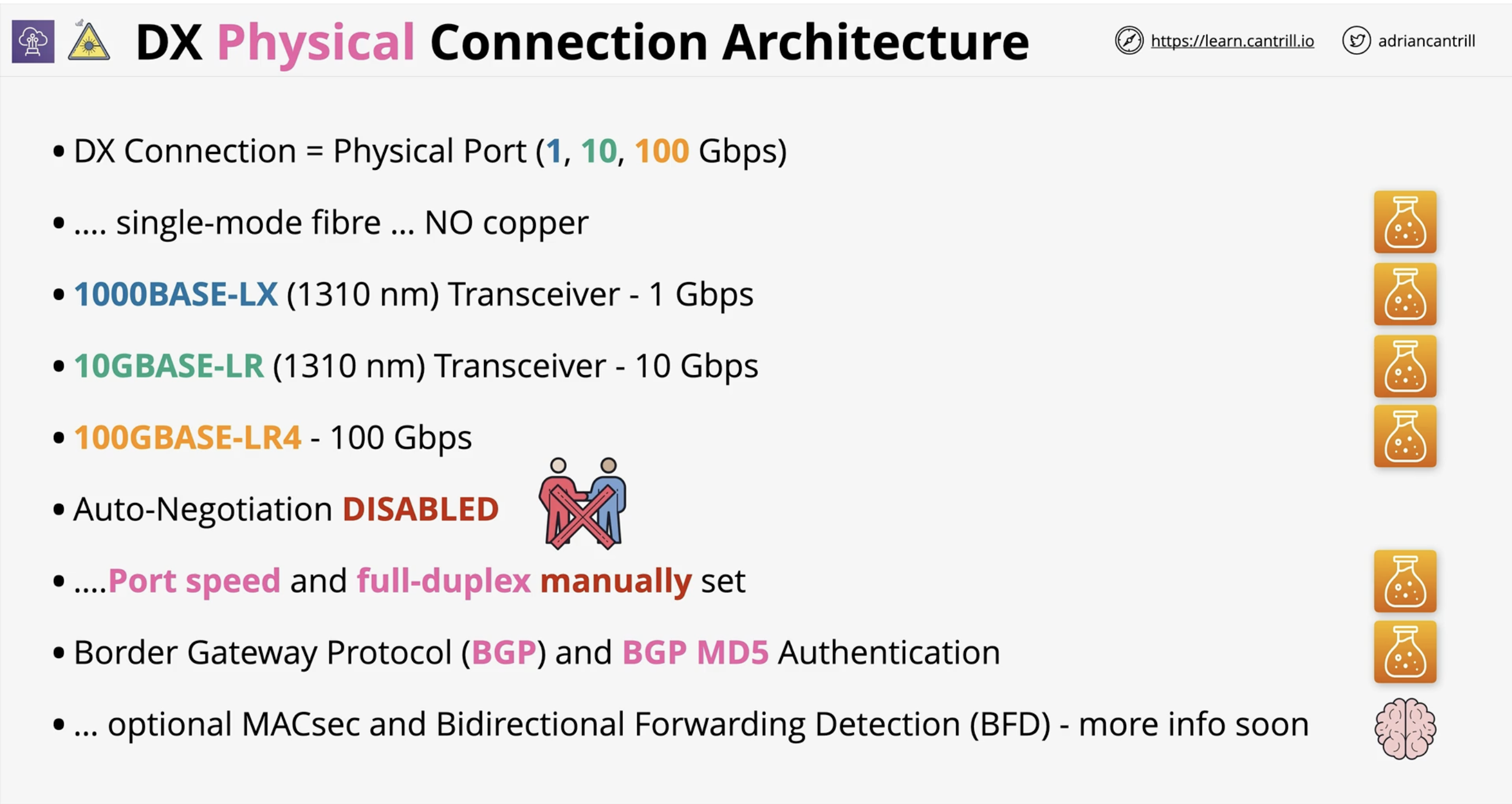4.33. AWS Direct Connect (DX) - Physical Connection Architecture
1/16
There's no tags or description
Looks like no tags are added yet.
Name | Mastery | Learn | Test | Matching | Spaced |
|---|
No study sessions yet.
17 Terms
What is AWS Direct Connect (DX)?
A dedicated physical network connection between your on-premises network and AWS.
Where are DX ports allocated?
At Direct Connect Locations (DX Locations).
What are the available port speeds when ordered directly from AWS?
1 Gbps, 10 Gbps, and 100 Gbps.
Is 100 Gbps available in all DX locations?
❌ No – 100 Gbps is not yet globally available. Availability depends on the specific DX location.
What kind of physical medium is required to connect to DX ports?
Single-mode fiber. ❌ Copper is not supported.
What standard must be used for a 1 Gbps DX connection?
1000BASE-LX, using 1310 nm optical wavelength.
What standard must be used for a 10 Gbps DX connection?
10GBASE-LR, using 1310 nm optical wavelength.
What standard must be used for a 100 Gbps DX connection?
100GBASE-LR4, using 1310 nm optical wavelength.
Is auto-negotiation supported on DX ports?
❌ No – Auto-negotiation must be disabled.
What must be manually configured on your DX router port?
Speed and Full-Duplex settings.
What routing protocol is required to use DX?
BGP (Border Gateway Protocol) is mandatory.
What BGP security feature must be supported?
BGP MD5 authentication.
What optional security feature can be used on DX?
MACsec (Media Access Control Security).
What optional fault detection protocol is supported?
Bidirectional Forwarding Detection (BFD).
What kind of hardware must your on-prem router support at DX location?
It must support BGP, BGP MD5, and use compatible optical transceivers.
Why do you need to match optical standards?
Mismatched transceivers can cause connectivity failures – both ends must match in standard and wavelength.
[Overview] DX Architecture
